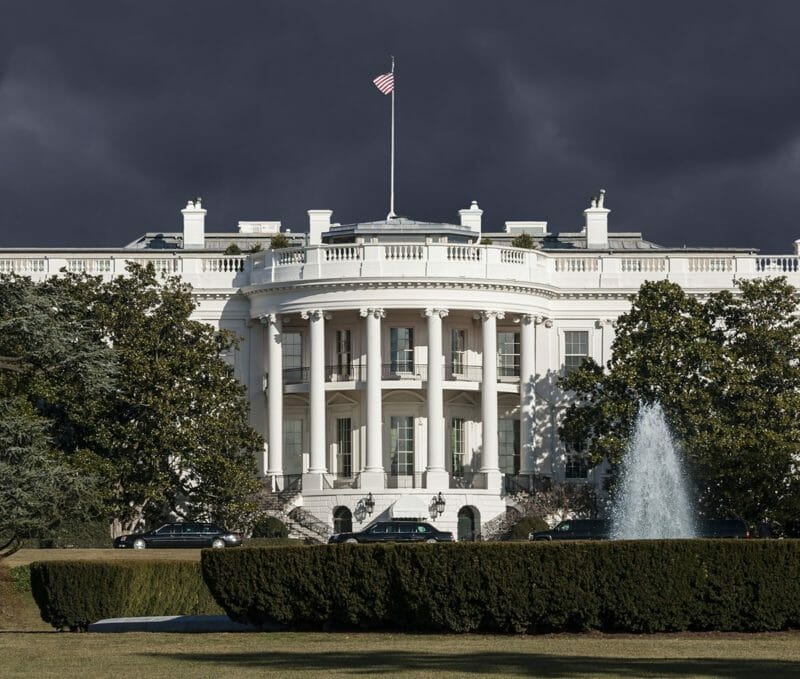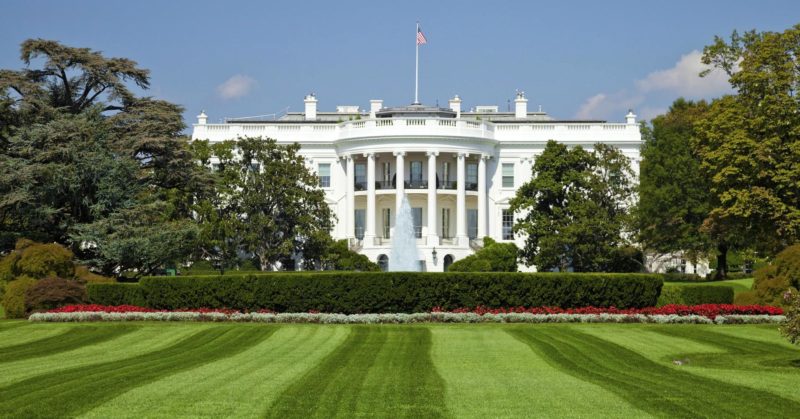Federal employees are often concerned about how Social Security will impact their federal retirement. If you are a CSRS employee, you should know that there are many variables to be considered if you have ever paid into Social Security. In this blog, we are discussing Windfall Elimination Provision (WEP) and Government Pension Offset (GPO) and suggesting ways on how federal employees can maximize their Social Security and get better federal retirement benefits. Read More

Late last year, new legislation was signed into law that will usher in some of the most sweeping changes to retirement plans in decades. The Setting Every Community Up for Retirement (or SECURE) Act was originally passed by the House of Representatives last spring. It failed to pass the Senate then, but the legislation was included in the year-end spending bill that was passed on December 20, 2019.
The SECURE Act became effective on January 1, 2020, and it will inevitably affect many retirement savers, for better or worse. Here are a few of the most significant provisions that you should be aware of:
No more age restriction on traditional IRA contributions
Before the Secure Act, you could not make contributions to a traditional IRA for the year during which you reached age 70 1/2 or any later year. (There’s no age restriction on Roth IRA contributions, and the Secure Act does not change that.)
New law: For tax years beginning after 2019, the Secure Act repeals the age restriction on contributions to traditional IRAs. So, for tax years beginning in 2020 and beyond, you can make contributions after reaching age 70½. That’s the good news.
Key point: The deadline for making a contribution for your 2019 tax year is April 15, 2020, but you cannot make a contribution for 2019 if you were age 70 1/2 or older as of Dec. 31, 2019. Thanks to the new law, you can make contributions for tax year 2020 and beyond.
Side effect for IRA qualified charitable distributions
After reaching age 70 1/2, you can make qualified charitable contributions of up to $100,000 per year directly from your IRA(s). These contributions are called qualified charitable distributions, or QCDs. Effective for QCDs made in a tax year beginning after 2019, the $100,000 QCD limit for that year is reduced (but not below zero) by the aggregate amount of deductions allowed for prior tax years due to the aforementioned Secure Act change. In other words, deductible IRA contributions made for the year you reach age 70 1/2 and later years can reduce your annual QCD allowance.
You generally must begin taking annual required minimum distributions (RMDs) from tax-favored retirement accounts (traditional IRAs, SEP accounts, 401(k) accounts, and the like) and pay the resulting income tax hit. However, you need not take RMDs from any Roth IRA(s) set up in your name.
Before the Secure Act, the initial RMD was for the year you turned age 70 1/2. You could postpone taking that initial payout until as late as April 1 of the year after you reached the magic age. If you chose that option, however, you must take two RMDs in that year: one by the April 1 deadline (the RMD for the previous year) plus another by Dec. 31 (the RMD for the current year). For each subsequent year, you must take another RMD by Dec. 31. Under an exception, if you’re still working as an employee after reaching the magic age and you don’t own over 5% of the outfit that employs you, you can postpone taking RMDs from your employer’s plan(s) until after you’ve retired.
New law: The Secure Act increases the age after which you must begin taking RMDs from 70 1/2 to 72. But this favorable development only applies to folks who reach 70 1/2 after 2019. So, if you turned 70 1/2 in 2019 or earlier, you’re unaffected. But if you will turn 70 1/2 in 2020 or later, you won’t need to start taking RMDs until after attaining age 72. As under prior law, if you’re still working after reaching the magic age and you don’t own over 5% of the employer, you can postpone taking RMDs from your employer’s plan(s) until after you’ve retired.
Key point: If you turned 70 1/2 in 2019 and have not yet taken your initial RMD for that year, you must take that RMD, which is for the 2019 tax year, by no later than 4/1/20 or face a 50% penalty on the shortfall. You must then take your second RMD, which is for the 2020 tax year, by Dec. 31, 2020.
Now for the bad news
Stricter rules for post-death required minimum distributions curtail ‘Stretch IRAs’: The Secure Act requires most non-spouse IRA and retirement plan beneficiaries to drain inherited accounts within 10 years after the account owner’s death. This is a big anti-taxpayer change for financially comfortable folks who don’t need their IRA balances for their own retirement years but want to use those balances to set up a long-term tax-advantaged deal for their heirs.
Before the Secure Act, the required minimum distribution (RMD) rules allowed you as a non-spouse beneficiary to gradually drain the substantial IRA that you inherited from, say, your grandfather over your IRS-defined life expectancy.
For example, say you inherited Grandpa Dave’s $750,000 Roth IRA when you were 40 years old. The current IRS life expectancy table says you have 43.6 years to live. You must start taking annual RMDs from the inherited account by dividing the account balance as of the end of the previous year by your remaining life expectancy as of the end of the current year.
So, your first RMD would equal the account balance as of the previous year-end divided by 43.6, which would amount to only 2.3% of the balance. Your second RMD would equal the account balance as of the end of the following year divided by 42.6, which translates to only 2.35% of the balance. And so, on until you drain the inherited Roth account.
As you can see, the pre-Secure Act RMD regime allowed you to keep the inherited account open for many years and reap the tax advantages for those many years. With an IRA, this is called the “Stretch IRA” strategy. The Stretch IRA strategy is particularly advantageous for inherited Roth IRAs, because the income those accounts produce can grow and be withdrawn federal-income-tax-free. So, under the pre-Secure Act rules, a Stretch Roth IRA could give you some protection from future federal income tax rate increases for many years. That’s the upside.
Unfortunately, the Secure Act’s 10-year rule puts a damper on the Stretch IRA strategy. It can still work, but only in the limited circumstances when the 10-year rule does not apply (explained below). This development will have some well-off folks and their estate planning advisers scrambling for months (at least) to react. That’s especially true if you’ve set up a “conduit” or “pass-through” trust as the beneficiary of what you intended to be a Stretch IRA for your heirs.
Key point: According to the Congressional Research Service, the lid put on the Stretch IRA strategy by the new law has the potential to generate about $15.7 billion in tax revenue over the next decade.
Effective date: The Secure Act’s anti-taxpayer RMD change is generally effective for RMDs taken from accounts whose owners die after 2019. The RMD rules for accounts inherited from owners who died before 2020 are unchanged.
Who is affected?
The Secure Act’s anti-taxpayer RMD change will not affect account owners who drain their accounts during their retirement years. And account beneficiaries who want to quickly drain inherited accounts will be unaffected. The change will only affect certain non-spouse beneficiaries who want to keep inherited accounts open for as long as possible to reap the tax advantages. In other words, “rich” folks with lots of financial self-discipline.
The Secure Act’s anti-taxpayer RMD change also will not affect accounts inherited by a so-called eligible designated beneficiary. An eligible designated beneficiary is: (1) the surviving spouse of the deceased account owner, (2) a minor child of the deceased account owner, (3) a beneficiary who is no more than 10 years younger than the deceased account owner, or (4) a chronically-ill individual (as defined).
If your grandfather dies in 2020 or later, you can only keep the big Roth IRA that you inherit from him open for 10 years after his departure.
Under the exception for eligible designated beneficiaries, RMDs from the inherited account can generally be taken over the life or life expectancy of the eligible designated beneficiary, beginning with the year following the year of the account owner’s death. Same as before the Secure Act.
So, the Stretch IRA strategy can still work for an eligible designated beneficiary, such as an account owner’s much-younger spouse or recently born tot. Other non-spouse beneficiaries (such as an adult child, grandchild, niece or nephew) will get slammed by the new 10-year account liquidation requirement. So, if your grandfather dies in 2020 or later, you can only keep the big Roth IRA that you inherit from him open for 10 years after his departure. Bummer!
10-year rule specifics: When it applies, the new 10-year rule generally applies regardless of whether the account owner dies before or after his or her RMD required beginning date (RBD). Thanks to another Secure Act change explained earlier, the RMD rules do not kick in until age 72 for account owners who attain age 70 1/2 after 2019. So, the RBD for those folks will be April 1 of the year following the year they attain age 72.
Following the death of an eligible designated beneficiary, the account balance must be distributed within 10 years.
When an account owner’s child reaches the age of majority under applicable state law, the account balance must be distributed within 10 years after that date.
The bottom line: As you can see, the Secure Act includes both good and bad news for folks who don’t enjoy paying taxes. The new law includes more important tax changes that I’ve not covered here.
3 examples of new RMD rules for non-spousal retirement account beneficiaries
Example 1: David dies in 2020 and leaves his IRA to designated beneficiary Diane, his sister, who was born eight years after David. Diane is an eligible designated beneficiary. Therefore, the balance in the inherited IRA can be paid out over her life expectancy. If David dies before the account is exhausted, the remaining balance must be paid out within 10 years after her death.
Example 2: Diane dies in 2020 and leaves her IRA to designated beneficiary David, her brother, who was born 12 years after Diane. David is not an eligible designated beneficiary because he is more than 10 years younger than Diane. The balance in the inherited IRA must be paid out within 10 years after Diane’s death.
Example 3: Michael dies in 2020 at age 85. He lives his $2 million Roth IRA to his 24-year-old spouse Melissa. Since Melissa is an eligible designated beneficiary, the new 10-year rule does not apply to her. As a surviving spouse, she can retitle the inherited Roth account in her own name. Then she will not have to take any RMDs for as long as she lives. So, this is a situation where the Stretch IRA strategy still works well (although not quite as well as before the Secure Act for reasons that are too complicated to explain here).
Example 4: Michael dies on Dec. 15, 2019. He left his IRA to designated beneficiary Melissa, his beloved niece, who is 30 years younger than Michael. Because Michael died before 2020, the balance in the inherited IRA can be paid out over Melissa’s life expectancy under the pre-Secure Act RMD rules. If Melissa dies on or after 1/1/20, the balance in the IRA must be paid out to her designated beneficiary or beneficiaries or the heir(s) who inherit the account within 10 years after Melissa’s death.
If you think this is something you should consider, reach out to us to get your Free Retirement review to see how we can help you maximize your “401k” Federal Savings Plan in regards to using the New Secure Act. Contact us or give us a call at (877) 733-3877 x 1 to schedule your review today!
Once you are done with your job responsibilities, you want to spend the remainder of your life, i.e. the retirement period relaxing, chilling, traveling around the world, or spending more time with your loved ones. If you are a federal employee and want to enjoy federal retirement benefits to the full, it’s important that you smartly and strategically plan your retirement. Mistakes committed during the process can cost big and lead to a financial crisis post-retirement. Here are a few mistakes that you should avoid to ensure a secure financial future- Read More

After the annual spike in retirement claims submitted by federal employees at the beginning of the year, the Office of Personnel Management was only able to reduce its backlog by a few hundred claims last month.
The agency received 17,134 retirement claims in January, a huge increase compared to this time last year, when it received 13,264 claims, and the 9,273 it received in February.
Meanwhile, OPM processed 10,059 claims in January and 9,627 in February, bringing its backlog inventory to 23,629 by the end of February—only down from 23,983 in January, a reduction of 1.5%.
It took an average of 58 days to process a single claim in January and 54 days in February.
The figures come from OPM’s monthly claims processing progress report available on the OPM website.
If you think your ready for retirement, and would like a Free Retirement Review, visit our Contact Us page to Request and Schedule your review today or call (877) 733-3877

The Trump administration this week revived a proposal to consolidate most of the categories of paid leave available to federal employees into one pool, and reduce the overall number of leave days available to them.
Currently, in addition to 10 paid federal holidays, federal workers receive up to 13 sick days annually, as well as anywhere from 13 to 26 vacation days, depending on their length of service. In the White House’s fiscal 2021 budget request, unveiled Monday, President Trump proposed creating a single consolidated category of leave from which employees can pull as needed.
Although the administration said the new system would be easier for employees to use and agencies to manage, it noted that the total number of days available to federal workers would decrease, although it did not say by how much. The plan would require the passage of legislation by Congress.
“The 2021 budget proposes to transition the existing civilian leave system to a model used in the private sector to grant employees maximum flexibility by combining all leave into one paid time off category,” budget documents stated. “While the total leave days would be reduced, the proposal adds a short term disability insurance policy to protect employees.”
The administration did not expand on what this new “insurance policy” would look like.
The consolidated leave system would remain separate from the newly enacted paid parental leave program, which provides new parents up to 12 weeks of paid leave after the birth, adoption or foster placement of a new child. Signed into law as part of the 2020 National Defense Authorization Act, this new benefit will be implemented by Oct. 1.
The proposal appeared verbatim in the Trump administration’s fiscal 2020 budget proposal, but lawmakers elected not to include it either in their spending bills or in separate legislation.
Meanwhile, the Office of Personnel Management on Monday issued its annual call to federal health insurers to send their benefit and rate proposals for next year’s Federal Employees Health Benefits Program enrollment period. The agency asked insurance companies to focus both on plan quality and affordability, as well as to address a number of trending issues in medical care.
Additionally, OPM asked insurers to identify so-called “low-value care” that will no longer be covered, specifically procedures like unnecessary diagnostic testing. The agency also asked companies to highlight how to improve both the quality and utilization of tobacco cessation benefits.
This is just another area where the Government wants to take more benefits from you the employee. If you would like to know more, or would like to have a Retirement consultation, please let us know. You can Contact Us and schedule your review here.

WHEN YOU REACH RETIREMENT OR CLOSE TO RETIREMENT, you expect to reap the rewards for decades of hard work and diligent saving so you can live happily ever after.
Well, as many Americans are finding out, it’s not always a fairy-tale ending. Even a big pile of money does not guarantee a secure retirement. In fact, one of the biggest concerns people have about retirement is that they won’t have the income to sustain their current lifestyle or, even worse, that they could run out of money altogether.
These concerns can often lead to a less enjoyable retirement because people are afraid they might spend too much of their savings in the early years and not have enough later when their health is declining and inflation has driven up healthcare costs.
The good news is that there is a way to improve your chances of achieving a more secure and satisfying retirement through retirement income planning. Studies show that people who have a protected lifetime income stream are generally more secure financially than those who don’t. Additionally, people with protected lifetime income have a higher level of satisfaction in retirement, which is a key factor in enjoying your retirement years.
A 2018 GUARANTEED LIFETIME INCOME STUDY conducted by Greenwald & Associates and CANNEX gathered information from 1,003 individuals between the ages of 55 and 75 and whose household assets were at least $100,000. Respondents said the greatest benefits of having a protected lifetime income are protection against longevity risk, peace of mind, and being better able to budget – all of which can make for a less stressful and happier overall retirement.
The study also found that the perceived value of protected lifetime income continues to grow. More respondents now considered protected income “a highly-valuable addition to Social Security” compared to one year earlier. Of these individuals, nearly three-quarters said protected lifetime income is “extremely important” to their financial security.
While both Social Security and pensions can provide this kind of income stream, they don’t always cover your retirement income needs. You may also be one of the many Americans who doesn’t receive a pension. In that case, putting money into an annuity can supplement your protected lifetime income, helping you maintain your lifestyle for life
The study found that concerns about long-term health care, losing money in a market downturn, and fear of outliving retirement savings were among the factors that respondents said increased their interest in protected lifetime income.
Higher satisfaction scores for those with protected lifetime income
Between 1998 and 2010, the University of Michigan conducted the Health and Retirement Study, which gathered data from approximately 26,000 Americans over the age of 50 on an array of retirement issues, such as wealth, income, job security, health, and cognition.
The results revealed that satisfaction scores for all of these retirement issues were significantly higher for people who had more than 30% of their assets invested in protected lifetime income products. For example, when it comes to nursing home expenses, individuals with at least 30% of their retirement portfolio made up of protected lifetime income products were more confident that they’d be able to afford it.
While the study did not indicate a “magic number,” it did find that when people have more protected lifetime income, their overall satisfaction levels rose accordingly. And even though retirement satisfaction has been declining over time, satisfaction rates remain higher for people with a guaranteed monthly income stream, according to the study.
There’s no question that financial uncertainty can impact your happiness in retirement. That is why protected lifetime income products as a portion of your retirement portfolio can help ease a lot of that worry. So you should schedule a retirement review with a our Federal Retirement Consultants, and see how an annuity could help protect your retirement income and pave the road to a less stressful and happier lifestyle. Visit our contact us page today or call us at (877) 733-3877 to schedule your review.

The agency responsible for processing payroll for around 650,000 federal workers last week announced that it had issued incorrect paychecks for some employees across the federal government earlier this month.
The problem stemmed from the final paycheck of the 2019 calendar, which ended Jan. 4 and was issued Jan. 10. A number of federal workers reported receiving both smaller and larger amounts than they were owed.
The National Finance Center, which is a subcomponent of the Agriculture Department but provides payroll services for a variety of federal agencies, first acknowledged the discrepancies on Jan. 10, and said the problem likely resulted from federal payroll tax withholding.
By Jan. 14, the National Finance Center announced that it had identified the root cause: employees who had not submitted a new W-4 form or were not exempt defaulted to a new, often incorrect number of exemptions. Single federal workers had taxes withheld as single, with two exemptions, while married feds had taxes withheld as married, with three exemptions.
NFC said it implemented changes to fix the problem “prior to the second pass” on the relevant pay period’s payroll processing. Although the agency said it expected to have compiled a list of all employees who received the wrong amount in their pay check by the end of last week, it did not announce a timeframe for when employees who are owed money would be made whole, or when employees who were overpaid will see a lighter paycheck.
“Updates will be forthcoming as additional information becomes available and the corrective action is finalized,” NFC wrote.
Meanwhile, the federal agency responsible for administering the federal government’s 401(k)-style retirement savings program proposed new regulations this week to make it easier for older federal employees to make catch-up contributions to their “401k” Federal Savings Plan accounts.
Currently, “401k” Federal Savings Plan participants age 50 and older may exceed the normal 401(k) annual contribution limits in order to make up for time spent in the private sector or when they were otherwise unable to invest in the “401k” Federal Savings Plan . But in order to do so, those federal workers must submit a form authorizing catch-up contributions, in addition to the standard contribution election form that all participants provide to their agency.
In draft regulations set for publication to the Federal Register Thursday, the Federal Retirement Thrift Investment Board, which governs the “401k” Federal Savings Plan , proposed that beginning Jan. 1, 2021, federal workers will no longer be required to submit that second form to enroll in catch-up contributions.
“Instead, the “401k” Federal Savings Plan will simply continue to accept contributions based on the participant’s contribution election that is already on file, until his/her contributions reach the combined limits on catch-up contributions and other types of contributions,” the agency said.
“401k” Federal Savings Plan officials first announced that this change would be coming last year. It is part of an effort to make the process simpler and easier for federal workers to participate, as well as to streamline the process for both the “401k” Federal Savings Plan and federal agencies.
According to the proposed regulations, beginning next year, when federal workers hit the standard annual contribution limit, the “401k” Federal Savings Plan will automatically cross reference their ages to see if they are eligible to make catch-up contributions. If the employees are at least 50 years old, they will be able to continue to make contributions up to the higher catch-up contributions limit.
Want to learn more about how to help Maximize your “401k” Federal Savings Plan Contributions and other Federal Benefits, request your free retirement review today to learn all about your benefits. Visit our Contact-Us Page to request and Schedule your review today.

Congressional negotiators agreed to use language advocated by Democrats to Provide an across-the-board 2.6% Pay increase to Federal Civilian Employees, along with an average 0.5% boost in Locality Pay.
Congress is set to provide federal civilian employees with an average pay raise of 3.1% next year as part of a spending deal that must pass before Friday’s deadline to avert a government shutdown.
According to a House Democratic aide, language in the spending legislation, which lawmakers still were finalizing Monday afternoon, would provide feds with a 2.6% across-the-board raise, along with an average 0.5% increase in locality pay.
The provision mirrors language passed by the Democrat-controlled House as part of its fiscal 2020 Financial Services and General Government appropriations bill earlier this year. The Senate’s version of the bill contained no language on employee compensation, effectively endorsing President Trump’s plan to provide federal workers with a 2.6% across-the-board raise but no increase in locality pay.
The agreement also marks the return of pay parity, as members of the military are also slated to receive an average 3.1% pay raise. Last year, although service members received a 2.6% pay increase, civilian feds only saw a 1.9% raise, as part of a deal to end the 35-day partial government shutdown.
The House and Senate must both vote to approve the spending deal, which will be split into two bills, by Friday, in order to avoid another government shutdown.

The agency responsible for administering the federal government’s 401(k)-style retirement savings program announced Tuesday that it plans to change how it calculates annual cost of living adjustments associated with some of its offerings for retirees.
When “401k” Federal Savings Plan participants take a post-separation withdrawal, they have the option to receive the money over time in the form of an annuity with an increasing payment option, which is based on an annual cost-of-living adjustment calculation. Currently, these annual adjustments are tied to inflation, as measured by the annual change in the consumer price index, with a cap of 3% per year.
Since the “401k” Federal Savings Plan contracts out annuity services to a vendor, that vendor charges fees based on an annual increase of 3% per year, even when the actual annual adjustment is less than that.
According to a proposed rule published Tuesday in the Federal Register, the “401k” Federal Savings Plan would cease tying annual cost of living increases to inflation, and instead provide an annual fixed increase of 2% per year. Officials noted that the Federal Open Market Committee has stated its aim is to keep inflation at that rate each year “over the medium term,” and that the average annual rate of inflation over the last 20 years has been 1.95%.
The change, according to the “401k” Federal Savings Plan , would allow participants who take an annuity to receive, on average, a 10% to 15% higher initial monthly payment, due to reduced fees to the annuity vendor.
“Although this increase comes at the expense of a smaller amount of inflation protection (i.e., protection only up to 2% per year as opposed to 3%), using a fixed rate makes it less likely that participants will pay for more inflation protection than they need,” the “401k” Federal Savings Plan wrote.
And with a fixed COLA adjustment each year, participants will have more certainty regarding how much money they will receive on a monthly and yearly basis.
In the wake of the surprise news that President Trump will grant federal employees the day off on Christmas Eve next week, the Office of Personnel Management has issued guidance clarifying how that decision will affect federal workers’ pay and benefits.
On the pay front, full-time federal employees will receive their usual basic pay despite federal agencies being closed. And those who had been scheduled to take leave will not be charged for the day off. But if an employee has scheduled “use or lose” annual leave and cannot reschedule it before the end of the leave year, which falls on Jan. 4 for most workers, it will not be refunded to their leave bank.
The holiday’s impact on part-time and alternative work schedule workers varies, but OPM issued a fact sheet to go over a variety of possible scenarios

Hopefully by now, you’ve done your research and narrowed your options for your 2020 Federal Employee’s Health Benefits Program plan and possibly dental and vision coverage. The end of open season is only a few days away (midnight EST on Monday, Dec. 9).
Many people will decide to stay with the same plan they have this year and keep the same allotments in their flexible spending accounts. According to the Office of Personnel Management, if you do nothing, here’s what will happen in 2020:
- You will continue to be covered by your current health insurance plan, unless your plan is dropping out of FEHBP or reducing its service area. However, your benefits, premiums and coverage options may change.
- You will continue to be covered by your present dental and vision insurance plan. However, your benefits or premiums may change.
- If you already have an FSAFEDS account, it will not continue automatically. You must re-enroll.
- You can’t enroll, change your enrollment, or cancel your coverage in these programs outside the open season unless you experience a qualifying life event.
If you want to make a change, then the procedure depends on your agency or retirement system. Current employees can use one of various automated systems, depending on where they work. If you’re using a paper form, then submit form SF 2809 to your benefits specialist in human resources.
If you’re retired and your benefits are administered by OPM, then you can change your health benefit plan by using OPM’s Open Season Online system, calling 800-332-9798, or mailing OPM Form 2809 to: Office of Personnel Management, Open Season Processing Center, P.O. Box 5000, Lawrence, KS 66046-0500.
If You’re Retiring
Your agency needs to document your health insurance coverage to continue your coverage into retirement. If your agency is unable to provide documentation of an employee’s entire FEHBP coverage history, then OPM must have proof of coverage during the five years of service immediately prior to retirement—or if less than five years, during all service in which you were eligible for FEHBP.
Acceptable proof of coverage includes:
- SF 2809 (Health Benefits Election Form) or other enrollment forms
- SF 2810 (Notice of Change in Health Benefits Enrollment)
- History reports from online enrollments that show both the old plan and new plan, and the effective dates for each change
- Copies of screen shots or other documentation from online enrollments that show both the old plan and new plan, and the effective date for each change
- Evidence of coverage as a family member under another’s FEHBP enrollment
- Evidence of TRICARE/CHAMPUS enrollment (including evidence of coverage as a family member)
- A signed memorandum from the agency detailing the continuous coverage of the employee to prove they meet the five-year requirement
Changes made by employees who are retiring before the first pay period of the new year may not take effect on Jan. 1, 2020, but OPM will process them as quickly as possible and coverage will be retroactive to Jan. 1. In the meantime, use your current coverage until the new coverage is in place. Your SF 2809 enrollment form should be included with your retirement package, not processed by your agency.
If You’re Retiring at Age 65 or Older
Now that you are retiring and are over age 65, you can go get Medicare Option B. Here you can decide to stay with your health plan OR look at an alternative such as a Medicare Supplement. Here is an example of Mary and her husband John:
Mary is retiring and is 66 and John her husband is 67 and both have been on her health plan, now that she is retiring and can get Medicare Part B her Health plan was going to be $392 per month plus $144.60 each (01/01/2020 Rate increased from $135.50 2019) for a total of $681.20. But Excellent coverage with Zero out of pocket expenses, except co-pays on prescription drugs.
Now an alternative plan would be using a Medicare Supplement. Based on Mary and John’s ages I recommended Plan G which comes similar coverage, but would have to cover the $198 deductible with Plan G. Cost for Mary was $100.78 and John $107.22 plus Medicare Part B premiums for a total of $497.20 per month. Now they would also have to go get Medicare Part D for Prescription Drugs, but that plan usually is somewhere between $19-$34.95 per month depending on medications being used. So for everything bundled together with Part D with average cost of $24.95 the total would be $547.10 vs $681.20 for a first year savings of $134.10 per month or around $1600 per year.
Ask your Retirement specialist when you Contact Us today to see what rates you would have.

